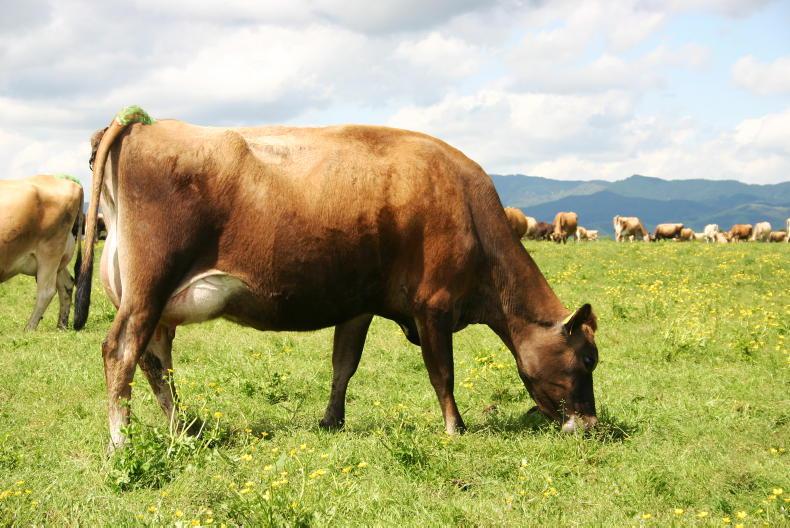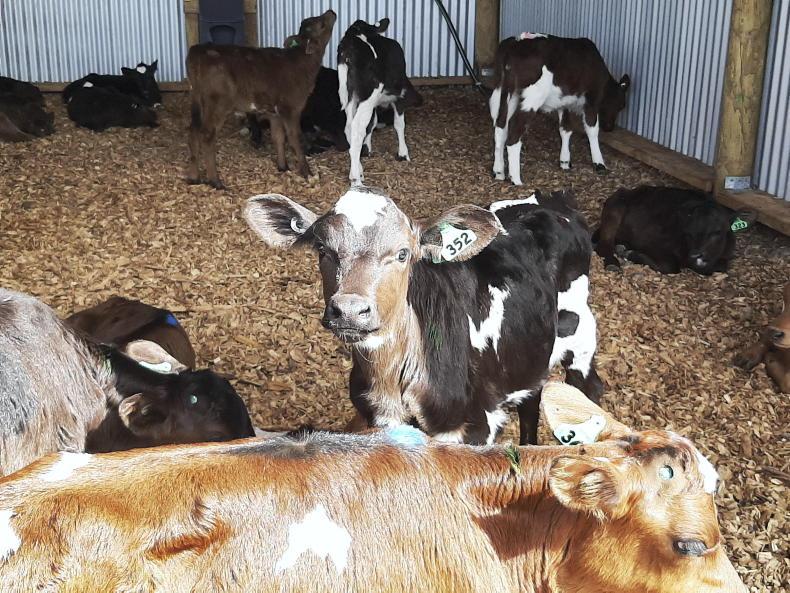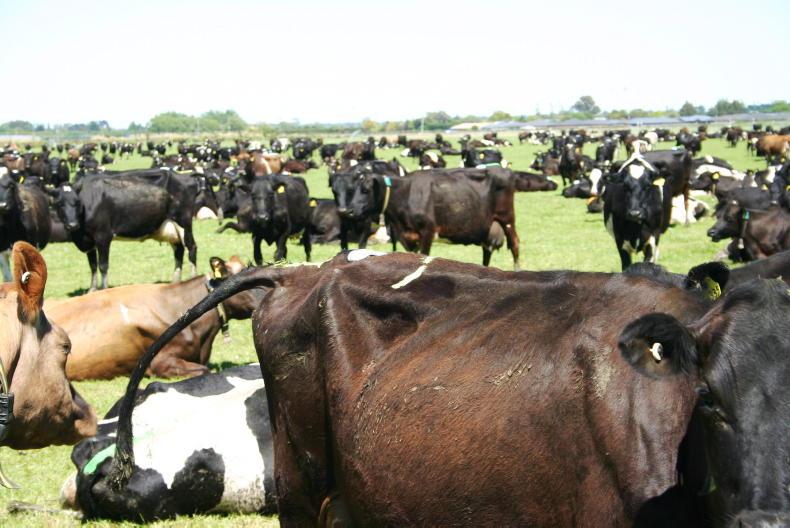The number of dairy cows and heifers in calf or milk in New Zealand has dropped by 6.3% over the last five years, according to Statistics New Zealand (NZ Stats), the equivalent of Ireland’s Central Statistics Office (CSO).
As of June 2022, there were 4.72m such dairy animals in New Zealand, compared with the 5.04m seen in 2017. The latest NZ Stats figures, published this week, indicate a steady decline in dairy cows and heifers over the five years.
New Zealand’s North Island saw the largest decline, with almost 12% fewer dairy cows and heifers in 2022 than there was in 2017. However, the country’s South Island saw its numbers increase by 2.3%.
Calves
A potential indicator of a further decline in New Zealand’s dairy herd, there was 10% fewer calves born alive to dairy heifers and cows in 2022 than there were in 2017.
The number of dairy calves on the ground has dropped from 4.63m in 2017 to 4.17m last year.

There are 4.72m dairy cows and heifers in calf or in milk in 2022, according to Statistics New Zealand.
Again, dairy calf numbers have fallen most significantly in the country’s North Island, with those born alive down nearly 13% from 2.80m in 2017 to 2.45m as of June 2022.
The total number of dairy cattle, including bulls and heifers yet to be bred, was 6.14m as of June 2022, down 6% on the 6.53m seen in 2017. Both figures are down on the peak number of such cattle, at almost 6.7m in 2014.
According to the NZ Stats analysis, dairy cattle numbers are at their lowest point in New Zealand since 2011.
Data
Statistics New Zealand is the public service department of New Zealand charged with the collection of statistics related to the economy, population and society of New Zealand.

There was 10% fewer calves born alive to dairy heifers and cows in New Zealand in 2022 than there were in 2017.
The final overall response rate it secured for its agricultural production census 2022 was 73%. This was a lower response rate compared with the 2017 census, which had a response of 84%.
The department’s data analysis concluded that the lower response rate did not significantly impact the quality of the statistics produced.
Read more
UK finalises trade deals with Australia and NZ
The number of dairy cows and heifers in calf or milk in New Zealand has dropped by 6.3% over the last five years, according to Statistics New Zealand (NZ Stats), the equivalent of Ireland’s Central Statistics Office (CSO).
As of June 2022, there were 4.72m such dairy animals in New Zealand, compared with the 5.04m seen in 2017. The latest NZ Stats figures, published this week, indicate a steady decline in dairy cows and heifers over the five years.
New Zealand’s North Island saw the largest decline, with almost 12% fewer dairy cows and heifers in 2022 than there was in 2017. However, the country’s South Island saw its numbers increase by 2.3%.
Calves
A potential indicator of a further decline in New Zealand’s dairy herd, there was 10% fewer calves born alive to dairy heifers and cows in 2022 than there were in 2017.
The number of dairy calves on the ground has dropped from 4.63m in 2017 to 4.17m last year.

There are 4.72m dairy cows and heifers in calf or in milk in 2022, according to Statistics New Zealand.
Again, dairy calf numbers have fallen most significantly in the country’s North Island, with those born alive down nearly 13% from 2.80m in 2017 to 2.45m as of June 2022.
The total number of dairy cattle, including bulls and heifers yet to be bred, was 6.14m as of June 2022, down 6% on the 6.53m seen in 2017. Both figures are down on the peak number of such cattle, at almost 6.7m in 2014.
According to the NZ Stats analysis, dairy cattle numbers are at their lowest point in New Zealand since 2011.
Data
Statistics New Zealand is the public service department of New Zealand charged with the collection of statistics related to the economy, population and society of New Zealand.

There was 10% fewer calves born alive to dairy heifers and cows in New Zealand in 2022 than there were in 2017.
The final overall response rate it secured for its agricultural production census 2022 was 73%. This was a lower response rate compared with the 2017 census, which had a response of 84%.
The department’s data analysis concluded that the lower response rate did not significantly impact the quality of the statistics produced.
Read more
UK finalises trade deals with Australia and NZ









 This is a subscriber-only article
This is a subscriber-only article










SHARING OPTIONS: